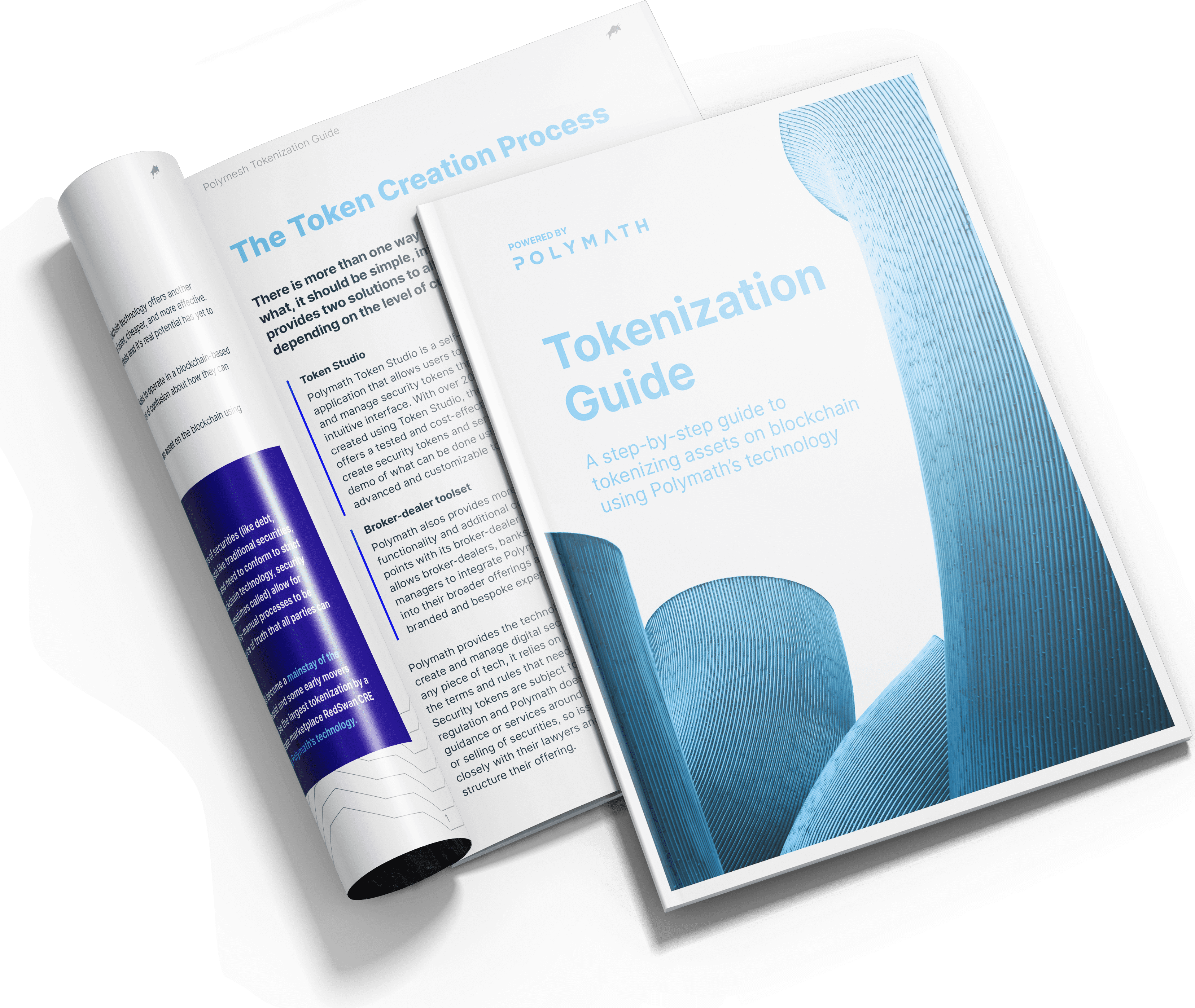Tokenization Guide

Learn the steps involved in tokenizing assets on the blockchain using Polymath’s technology
- Assembling the ecosystem
Issuers need to consider the full digital asset lifecycle, which involves a network of custody agents, broker-dealers, legal firms, cap table management providers, KYC/AML providers, and others.
- Configuring a security token
Once the raise is structured and the ecosystem is mapped out, issuers (or their agents) can configure their token in a few simple clicks.
- Setting compliance rules
After token configuration comes compliance automation, one of the main benefits to blockchain– some studies indicate that blockchain technology could cut compliance costs by up to 50%.
- Distributing the security token
Following token creation is asset distribution, the process of transferring tokens or funds to their intended recipients.
- Executing corporate actions
Corporate actions managed through legacy processes are complex, labor-intensive, and costly, but can be significantly improved with blockchain technology.
Download the Guide
There is more than one way to create a security token, but no matter what it should be simple, intuitive, and transparent. This guide easily explains the steps involved in tokenizing an asset on the blockchain using Polymath’s technology.
“Tokenization of securities is the future of capital markets but enterprise adoption hinges on reducing complexity using technology. Polymath’s technology goes a long way to streamlining the token creation and issuance process.”
Cryptoworth